Bob Dylan turned 65 on Wednesday to the strains of Forever Young, a song likely to be played by radio stations as if it were the national anthem. What did this symbolize? What were its ramifications? Will reaching that milestone have resonance for an entire generation?
This much is certain: He will hate hearing any of this stuff. "It's horrible," he told Playboy 40 years ago, on one of the countless occasions when he was asked if being a folk hero was a position of great responsibility. "I'll bet Tony Bennett doesn't have to go through this kind of thing. I wonder what Billy the Kid would have answered to such a question."
Billy the Kid didn't engage in a book's worth of verbal showdowns with the press. But Dylan has, and now those interviews have been invaluably collected. In an irresist-ible new anthology edited by Jonathan Cott, one of the original editors of Rolling Stone and arguably the most simpatico writer ever to converse with Dylan, the interview format remains eminently readable through more than 400 pages. And it yields far more than an extended conversation.

The mosaic of discussions found here (very first question: "Bob Dylan, you must be 20 years old now") is many things: biography, oral history, cultural time capsule, music lesson and psychodrama. It expands upon the mesmerizing portrait of Dylan that both his memoir, Chronicles, Volume 1, and Martin Scorsese's documentary No Direction Home have lately provided.
Arranged chronologically, these interviews vary wildly. That accounts for much of their cumulative appeal. A lot depends upon who was asking the questions and how combative or cooperative Dylan happened to be feeling. "What do you think of people who analyze your songs?" he was asked at his only televised full-length news conference, in 1965. "I welcome them -- with open arms," he replied, in much the same unwelcoming spirit on display in Don't Look Back, the 1967 documentary he subsequently renounced.
Sarcasm is an understandable response, given what he found himself up against. Here's another sampling of the same session: Does he prefer songs with messages, like Eve of Destruction? A. "Do I prefer that to what?" Q. "I don't know, but your songs are supposed to have a subtle message." A. "Subtle message???" Q. "Well, they're supposed to." A. "Where'd you hear that?" Q. "In a movie magazine." A. "Oh -- Oh God!"
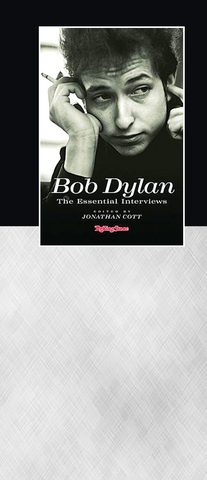
Clearly, Dylan interviews are not entirely about their subject.
Questioners reveal much about themselves just by talking to him. Jann Wenner, Rolling Stone's editor, managed to inform readers that he slept stark naked and found more importance in his Dylan run-in than might have been warranted. ("It somehow seemed appropriate enough that Judy Garland's funeral coincided with the interview.")
Nat Hentoff, writing for Playboy, gives Dylan's speaking voice a suave vocabulary and syntax it doesn't have elsewhere and remarks that the singer's "tonsorial tastes are on the conservative side," compared with those of other male performers of the 1960s. "How do you feel about these far-out hair styles?" Hentoff wants to know.
Cott, whose own worshipful side emerged via Dylan ("his songs are miracles, his ways mysterious and unfathomable"), could easily have compiled a book's worth of comic absurdities. But he has sought and captured a broad spectrum of Dylan's thinking, and of others' efforts to engage him. The book finds the rising star visiting Kenyon College in 1964, in a precociously good school newspaper account written by the future film critic and screenwriter Jay Cocks. It views Dylan through the beady eyes of A. J. Weberman, who stalked Dylan, stole his garbage and treated him to the occasional political screed. "I went on & gave D a rap against Imperialism, Racism & Sexism (he didn't seem like he was listening)," Weberman declares.
Among those who best subvert Dylan to their own purposes is Sam Shepard, who turns an interview into a two-man, one-act play. It is terse, playful and then abruptly confessional, with a fade-out at the finale. ("Bob stays still, staring off right.")
Here and elsewhere Cott identifies the major sea changes in Dylan's life via conversational format, without undue commentary. The book flags in overusing the interviewers' introductions, which rehash the same biographical details and voice-of-a-generation hyperbole.
In a book that extends from 1962 to 2004 (and shows that in September 2001 the voice of his generation was as speechless as any other), Dylan's assessments of his life and work are steadily illuminating. "There's just something about my lyrics that just have a gallantry to them," he remarked in 1991. "And that might be all they have going for them. However, it's no small thing." Passages like that reaffirm an overriding certitude: Nobody can explain Dylan as well as he, when he cares to do it, can explain himself.
Which is not to say that many, many others do not try. Michael Gray, who has spent years trying to capture Dylan's lightning in a bottle, has produced Bob Dylan Encyclopedia (coming out in the middle of next month), a heavy, utterly idio-syncratic compendium. It's even up-to-date enough to make reference to The Essential Interviews and include a snarky reference to Cott. Among its many other categories: "book endorsements, unfortunate," "blues, inequality of reward in," "co-option of real music by advertising, the," "radical political activity in 1960s-70s US, the strange disappearance of" and "repertoire, Dylan's early, unsuited to commercial radio."
The many entries on individual songs and performers are arbitrary in their length. Sometimes they are Webermanesque in their fury. Under the heading "interviews and the myth of their rarity," Gray assails the claim by Cott and many others that Dylan is any sort of sphinx. According to Gray, Dylan has been averaging an interview a month for four and a half decades.
Neither book performs what would have been a vital function: providing annotations that refer back to Dylan's versions of events in Chronicles. (Ray Gooch and Chloe Kiehl, the New York couple who supposedly made the young Dylan their houseguest amid a cornucopia of wonders, remain elusive in the extreme.) The facts of Dylan's life exist in many variations, and Chronicles tried to correct the record. If he had to be pigeonholed as the voice of a generation, surely he is entitled to the last word.
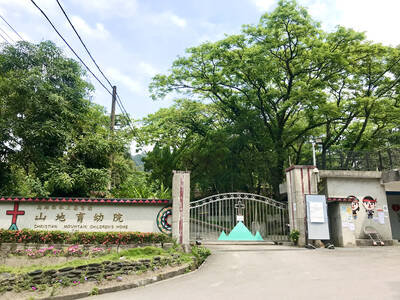
May 18 to May 24 Pastor Yang Hsu’s (楊煦) congregation was shocked upon seeing the land he chose to build his orphanage. It was surrounded by mountains on three sides, and the only way to access it was to cross a river by foot. The soil was poor due to runoff, and large rocks strewn across the plot prevented much from growing. In addition, there was no running water or electricity. But it was all Yang could afford. He and his Indigenous Atayal wife Lin Feng-ying (林鳳英) had already been caring for 24 orphans in their home, and they were in
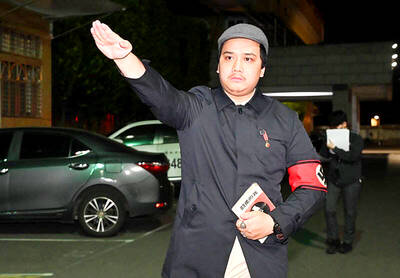
On May 2, Chinese Nationalist Party (KMT) Chairman Eric Chu (朱立倫), at a meeting in support of Taipei city councilors at party headquarters, compared President William Lai (賴清德) to Hitler. Chu claimed that unlike any other democracy worldwide in history, no other leader was rooting out opposing parties like Lai and the Democratic Progressive Party (DPP). That his statements are wildly inaccurate was not the point. It was a rallying cry, not a history lesson. This was intentional to provoke the international diplomatic community into a response, which was promptly provided. Both the German and Israeli offices issued statements on Facebook
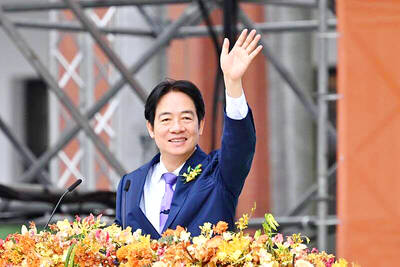
President William Lai (賴清德) yesterday delivered an address marking the first anniversary of his presidency. In the speech, Lai affirmed Taiwan’s global role in technology, trade and security. He announced economic and national security initiatives, and emphasized democratic values and cross-party cooperation. The following is the full text of his speech: Yesterday, outside of Beida Elementary School in New Taipei City’s Sanxia District (三峽), there was a major traffic accident that, sadly, claimed several lives and resulted in multiple injuries. The Executive Yuan immediately formed a task force, and last night I personally visited the victims in hospital. Central government agencies and the
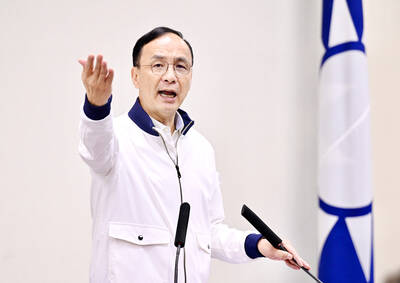
Australia’s ABC last week published a piece on the recall campaign. The article emphasized the divisions in Taiwanese society and blamed the recall for worsening them. It quotes a supporter of the Taiwan People’s Party (TPP) as saying “I’m 43 years old, born and raised here, and I’ve never seen the country this divided in my entire life.” Apparently, as an adult, she slept through the post-election violence in 2000 and 2004 by the Chinese Nationalist Party (KMT), the veiled coup threats by the military when Chen Shui-bian (陳水扁) became president, the 2006 Red Shirt protests against him ginned up by